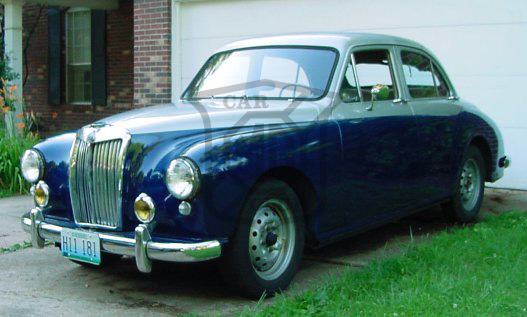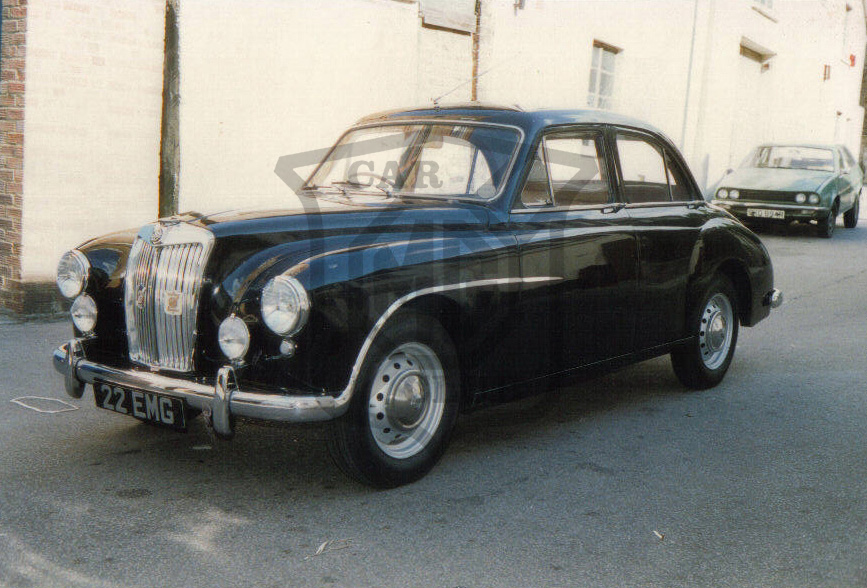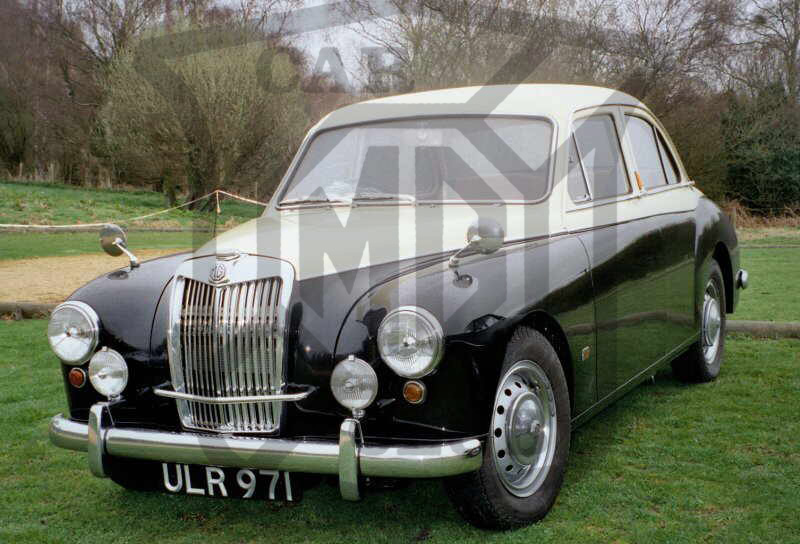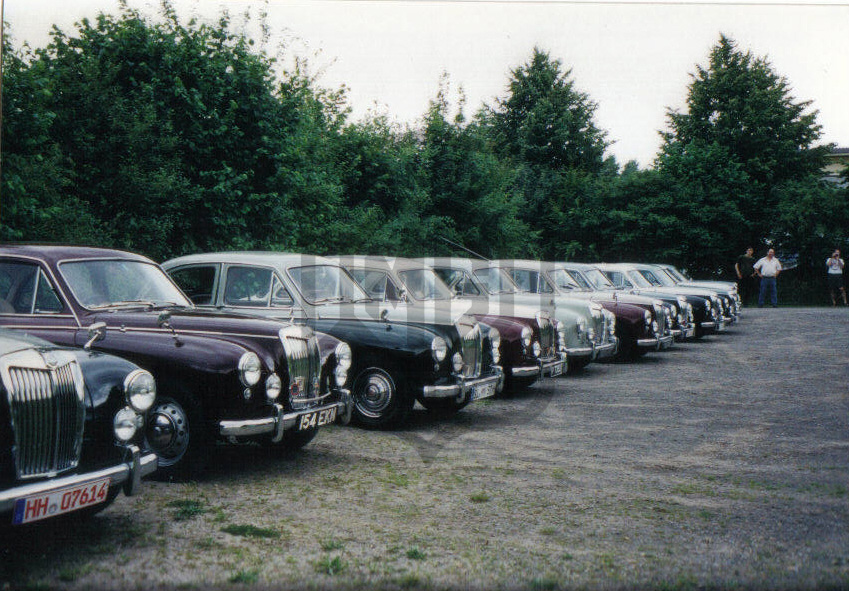So you want to buy a Z-Magnette?
It is now more than 48 years since the last Z-Magnette rolled out of Abingdon where it was built alongside the MGA and Riley Pathfinder, amongst others.
Designed almost entirely by the late Gerald Palmer, it was the first MG constructed with a monocoque bodyshell – every MG built up until then had had a separate chassis.
Introduced at the 1953 motor show, 36,600 were produced until late 1958 both in RHD and LHD. It was sold in American, European and Australian markets with some cars finding their way to even more obscure places. There were only a few relatively minor modifications and specification changes during that time which is a tribute to the correctness of the original design, indeed, it is superior in many respects to the later Farina model that succeeded it.
Many Z-Magnettes are still well used and enjoyed by their owners today and there are a higher than average (for the period) number of survivors. Many current owners have held on to their cars for a considerable number of years. Some have chosen to carry out improvements and modifications to enhance their cars for modern driving conditions, although even in standard form the Z-Magnette can cope remarkably well with traffic conditions today. It is also a popular choice for historic rallying competitions.
History and specification changes
After the enthusiastic response from the 1953 motor show visitors, the first cars were delivered early in March 1954 although not until the torque reaction bar, mounted on the rear axle, which caused loss of grip under heavy braking had been abandoned. The first 250 cars had no quarter lights in the front doors and these were added from chassis No. 751, although the styling is cleaner without them.
In March 1955 from car No. 6360, the “tintop” dashboard (which was painted to look like wood) was replaced with real wood. There were some other minor changes until in July 1956 a significant increase in power from 60 bhp to 68 bhp was achieved by increasing the compression ratio, modifying the exhaust manifold, and most importantly, increasing the bore size of the twin SU carburettors from 1 ¼” to 1 ½”.
In September 1956 the ZA became the ZB. Styling changes included different chrome side mouldings, modified dash and steering wheel, additional parcel shelf below the dashboard and the introduction of the two-tone Varitone model, which had a larger, “wrap around”, rear window.
Production finished in December 1958, the remaining cars being sold in the first few months of 1959.
Bodywork and styling
The Z- Magnette shares a similar bodyshell to the Wolsley 4/44 and 15/50 although actually only the front doors, roof panel and bootlid were identical. The Magnette is more aerodynamic or “airsmoothed”, as it was described at the time, with lower suspension and therefore a lower centre of gravity than the Wolseley models. A particularly attractive styling feature is the crease or body line from the front wing, along the front door to the rear door where it kicks up over the rear arch, a bit like a shapely lady lying on her side. The MGA and Bentley Continental have a similar design and look all the better for it. Whether Mrs Palmer was the inspiration for this or not we shall probably never know!
Being the first monocoque MG meant that the Z- Magnette was probably over engineered as the design took no chances with built-in structural weaknesses. This made it somewhat heavy for its size, although at 22 cwt dry, it was still lighter than its contemporaries which still had a chassis like the Riley 1.5 litre RME for example. Unfortunately, the design also incorporated many natural rust traps which affected most of the lower areas.
Sill panels, lower rear wings, door skin and frame bottoms, floor front wings, boot lid base etc, all suffer to varying degrees. The good news is that most repair panels area available from specialists and are relatively simple to replace. In the 1960s and 1970s many cars failed their MOTs due to excessive corrosion and ended up as stock cars which often completed several seasons because even when corroded they were still incredibly strong.
Engine
The only factory engine fitted to the Z-Magnette throughout its production was the 1500 (1489cc) BMC ‘B’ series although there was a 6-cylinder prototype made once. This engine is a good old workhorse which can take a bit of punishment and is easy to modify. Derrington crossflow cylinder heads were available at the time which improved performance considerably but these were expensive at the time and are now rare. Many owners have fitted the 1622cc and 1789cc versions from the Farina cars and MGB as these are a relatively straightforward conversion although the five main bearing MGB version requires a bit more work to fit.
Early cars had a bypass oil flow system which only filtered part of the oil drawn from the sump. The full flow system is much more efficient and most cars have this fitted now. There have been a few cases of crankshaft failure due to metal fatigue and more frequently cases of cylinder heads cracking. In some cases, depending on where the crack is, these can be repaired but it often makes more sense to fit a brand new MGB head which should last for years and has the advantage of having bigger valves which improve both torque and fuel consumption. It will also have hardened valve seals for unleaded fuel. The twin SU carburettors are easy to set up but can leak, especially when the cork seals dry up or if a float becomes porous. It is definitely worth fitting new floats.
Magnettes were often susceptible to fuel vaporisation when stuck in traffic on a hot day partly because the float chambers are close to the exhaust manifold. Decent heat shields are required and it’s best to use low octane fuel as its boiling point is higher. The ignition system works well but an electronic system which fits inside the distributor is available.
Coils and rotor arms are known to fail and spares should always be carried.
Some owners have fitted Jaguar XK 2.4 litre, Rover V8 and even Mercedes straight six engines but extensive modifications to the bulkhead are necessary. The engine most owners would have really liked is the Twin Cam unit from the MGA.
Transmission and rear axle
A four speed BMC transmission with synchromesh on 2nd, 3rd and 4th gears but not on reverse or 1st was fitted as standard. Early ZAs had a 4.3:1 rear axle ratio but this was deemed too high and soon a 4.875:1 was used instead, followed by a 4.55:1 for the later higher powered cars. Many Magnettes today now have the later higher ratio differential fitted. Some cars with modified, more powerful engines even have 4.3 or 4.1 ratios which make motorway cruising much more relaxing.
First gear is very low and there is a gap between 2nd and 3rd which would improve if the first two gears were higher. There is an MGA close ratio layshaft available which improves this. Second gear synchromesh is known to be weak and the cones from the Farina cars gearbox work better. Some owners have opted to fit a 5 speed gearbox from a Ford Sierra which gives the advantage of nicely spaced ratios and an overdrive top gear. It’s also quieter. A conversion kit including a modified bell housing and ancillary items is available commercially.
Overdrive was never offered as a factory option although a suitable Lockheed aftermarket system was available at the time. Some owners have fitted MGB gearboxes with overdrive but they are not a straight swap and the gear lever position changes.
A semi automatic (cluchless) “Manumatic” was offered on ZB s and varitones but was complicated and unpopular at the time and you’d be lucky to find one now.
Steering and suspension
The front suspension is independent with coil springs and telescopic shock absorbers, a conventional wishbone at the top and single lower track control arm located by 2 radius arms each side. The hub carriers swivel on king-pins. No anti-roll bar was fitted. The system works well and is easy to maintain, regular greasing makes the king-pins and bushes last indefinitely but the tie rod bushes should be inspected regularly especially the ones to the rear which join brackets under the floorpan as they cause a groove in the tie-bar itself if they perish or wear and have, in extreme cases, been known to break off completely due to wear and corrosion.

Rear suspension is conventional live rear axle mounted on semi-elliptic (cart) springs with U-bolts and rubber bushes to insulate the spring ends from the body. The springs may sag after a time but rarely break and can be re-tempered if necessary. Bush replacement is relatively simple too.
The steering is rack and pinion and works well. With a 2.6:1 ratio lock-to-lock it is nicely weighted and precise and adds to the Magnette’s well balanced and predictable handling. Apart from the odd split steering rack gaiter, there is not much to go wrong with it. Track rod ends last well if greased regularly.
Brakes
Hydraulically operated, ten inch drum brakes with twin leading shoes on the front were fitted originally and continued unchanged throughout. They work well with regular adjustment and the pedal is firm but has the right feel. If the car pulls to the left or right when braking, a leaking, but more probably, seized front wheel cylinder is usually to blame. The brake fluid should be changed regularly as it’s only a single circuit system. Some owners have fitted a servo but this is not really necessary and often makes the brakes feel too sharp, although it does help if front disc brakes are fitted which some owners have done.
Interior
With leather seats available in a variety of colours, a part walnut dashboard, carpets and cloth headlining as standard, the interior of a Z-Magnette is a lovely place to be. The front seats are comfortable and supportive even though they only adjust front to rear. Door trim panels and headlinings are available new, the seats can be recovered but the original “carvel” carpet is no longer available so the nearest equivalent is the only way to go.

Apart from the lack of a rev-counter, the instrumentation is comprehensive with oil pressure, temperature, fuel gauge and ammeter surrounding a half octagonal speedometer, its quite ergonomic too as you can reach the light and wiper switches without removing your right hand from the steering wheel and there’s a floor mounted dipswitch. The heater works well if maintained correctly although as with most cars of the period, demisting is fairly ineffective in damp conditions. There is an opening, 2-stage, scuttle vent for fresh air entry.
Wheels and tyres
Crossplies were standard from new but most cars now have radials fitted which improve handling and directional stability for a very slight sacrifice in ride comfort. Wheels on cars used for rallying have been known to suffer stress cracks near the wheel stud holes but cars used normally seem to be OK. Wheels from early SAAB 900s are a good alternative as they look nearly identical and are much stronger.
Electrics
Originally positive earth, many cars have now been converted to negative earth so that a modern tape or CD/radio player can be fitted. Foglamps were standard from new, as was a clock mounted above the dipping interior mirror, illuminated on the ZB and Varitones. The dynamo charging system is adequate unless extras such as a heated rear window or electric radiator cooling fan have been fitted although some owners have chosen to fit an alternator, usually from the MGB.

Wipers were single speed and self parking except on very early cars. A centrally mounted reversing light was fitted to the number plate lamp housing on the boot lid. Trafficator type indicators were fitted to ZAs and ZBs but Varitones had flashing indicators which utilised the front side lamps and rear brake lamps. Many cars now have amber flashers which can be tastefully added without detriment to overall appearance.
So, what’s it like to drive?
Pretty good actually. Nicely weighted steering, predictable handling and a tendency to understeer when pushed to the limit (although it is possible to get the tail to swing out, if required), and supportive front seats all contribute to a most satisfying experience. Top speeds are about 82mph (ZA) and 88 mph (ZB) and it was the fastest 1.5 litre saloon of its day. 60mph is a comfortable cruising speed after which it gets a bit noisy but for some reason seems to smooth out at around 75 mph. Leg room front and rear is sufficient for reasonable comfort on long journeys. The ride is firm but comfortable and compliant. The body rolls slightly when cornering fast but remains poised and well controlled even on uneven surfaces.
Prices
It is still possible to buy a Z-Magnette for total restoration or spares for under £500 but nowadays something tidy and useable would be nearer £3,000. Excellent original spec examples would be £6,000 and a really top condition or concours car, £8-10,000. Unless you really want a challenge it’s probably a good idea to buy the best car you can afford. The price is similar with which ever version you choose. Many owners prefer the simplicity of the ZA to the relative gaudiness of the Varitones – it’s all down to personal choice in the end. ZBs do seem to be the rarest variant though.
Parts and maintenance
Most mechanical jobs are well within the ability of the DIY mechanic although some are straightforward but time consuming like replacing the clutch for example. Parts supply is excellent for mechanical items as many are shared with other BMC cars.
Bodywork items require a visit to a specialist supplier but many are available secondhand or have been reproduced.

The handbook describes a strict greasing and lubricating regime and there are twelve grease nipples which require attention every 3000 miles or so but do prolong the life of suspension and steering components considerably. Small jobs like cleaning the electric SU fuel pump contact breaker surfaces, for example, should not be overlooked.
Z & Farina Magnette Register
The MG Car Club has a thriving register run by enthusiasts who enjoy using their cars regularly. You’ll find everything you need to know (and very possibly many things you don’t want to know) on the website.
Some of us use our cars daily, others just enjoy the odd trip at the weekend, maybe to a club event, but some are a tad more ambitious like Jose de Sousa from Portugal, for example, who has just completed the Peking-to-Paris rally and produced regular reports for the website throughout his adventurous and arduous journey. Despite having had my ZA for over 30 years, I still return from any trip with a smile on my face. They also make excellent wedding cars!

The Mk3 & Mk4 (Farina) cars will be covered another time.

 MG Car Club
MG Car Club













